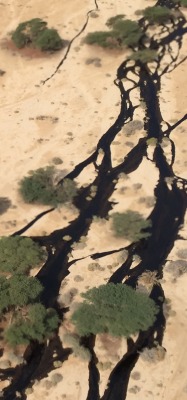The disastrous oil spill which occurred Wednesday night in the Arava Valley was caused by maintenance work on the Eilat Ashkelon Oil Pipeline in preparation for the building of the new international airport outside of Eilat. The pipeline brings oil from the port of Eilat to the refineries and power stations in the center of the country. This is a collision between an unnecessary development project and an unsustainable polluting fossil fuel, endangering human health in the region, destroying precious and irreplaceable natural treasures and widening the already expanding rift between Israel and Jordan.
The international airport being built to accommodate jumbo jets from Europe is a waste of Israel’s financial and scarce natural resources as there is already a Jordanian international airport that can accommodate large jets located 10 miles south of the current building site. The King Hussein Airport of Aqaba was first proposed as a solution to Eilat’s needs by then Foreign Minister Shimon Peres after the signing of the peace treaty between Israel and Jordan, but subsequent governments quashed the idea.
The Eilat Ashkelon Oil Pipeline continues to pump fossil fuels to power Israel’s greenhouse gas producing electric plants instead of embracing Israel most plentiful and sustainable renewable energy resource, solar energy. The government has wound back its original goal of 20% renewables by 2020 to a 10% goal. With Israel’s current renewable energy resources providing less than 2% we are not on track to reach even that less sustainable goal.
What kind of damage to nature has this man-made disaster caused? Dr. Elli Groner, Director of the Arava Institute’s Center for Hyper-Arid Socio-Ecology (CHASE) had this to say,

“The oil spill is in a highly sensitive area. The Arava Valley is a hyper-arid region in which such an accident has a large impact. The ecosystems in the Arava have developed over the centuries to deal with the harsh desert conditions, and are therefore more sensitive to disturbance. This evolution is why such accidents have a particularly devastating and possibly irreversible impact. The timing and location of this accident only add to the destruction. The disaster occurred in a very low-lying area close to where an abundance of trees and animals are found. It is now the beginning of the winter rainy season, which means that we may not be able to clean it up quickly enough to stop water from spreading the oil downwards and sideways into the aquifer. The aquifer is not deep in this area and in some places lies only a few meters below the surface. This is the most critical soil to the fundamental support of the native Acacia tree, which is the keystone species in the Arava, providing food, shelter and breeding grounds for other native, regional species. Acacia trees are already under severe stress due to climate change, and this accident may lead to significant mortality in an already sensitive area. It is not clear how quickly the soil can be taken out and cleansed (if at all), and the damage could be long term.
The Arava Institute’s Center for Hyper-Arid Socio-Ecology (CHASE) will measure the immediate impact and monitor the long-term impact of the spill on the surrounding area. We will sample the tree health, soil and the surrounding biodiversity. CHASE will determine which areas need immediate soil removal, and work with national and local government officials as well as other non-governmental organizations to limit the damage and rehabilitate the area. At the same time, the Center will search for animals that are in distress, and will monitor the situation in general.”
Arava Institute Alumnus and the Chief Ecologist for the Eilat District of the Israel Nature Reserve Authority, Roy Talbee claims that the damage from this incident could have been avoided by some kind of early warning system. Elli Groner agrees:
“If the authorities were informed early about the spill, they could have closed the pipes earlier and much less oil would have spilled . This highlights the need to have a “citizen science” approach in which the local residents are involved in protecting our environment. To this end, CHASE plans to launch a “citizen science” platform that will allow local residents to monitor the disaster locale and report on what they see.”
The Arava Institute, together with the Dead Sea & Arava Science Center, the Israeli Nature Reserves Authority, and our Jordanian colleagues are dedicated to protecting the unique Arava Valley. It is a shared natural resource which hosts rare and endemic species, is a major thoroughfare for birds migrating between Europe and Africa and offers breathtaking landscapes for visitors from around the world. We hope that the next government of the State of Israel recognizes the value of these natural treasures and chooses long-term sustainability over short-term political and financial gains.
David Lehrer
Executive Director
Arava Institute for Environmental Studies

